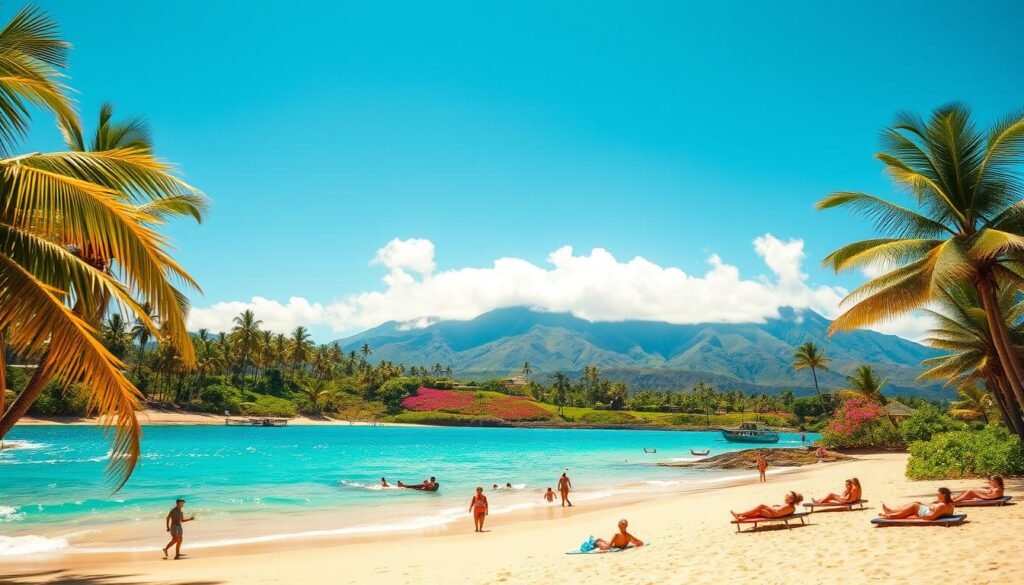Surprising fact: nearly half a million humpback whales swim near Maui each winter, creating one of the planet’s most dramatic wildlife shows.
I plan trips by balancing weather, crowds, and cost so your island escape feels easy and relaxed. I usually steer friends toward September and October for sunny days, calmer seas, and a mellow vibe across the islands.things-to-do-in-key-largo
Hawaii splits into two main seasons: a drier stretch from May through October and a wetter run from November through April. That affects everything from surf height to waterfall flow, and it helps me match activities—snorkeling, hiking, or surfing—with the right months.
Below I’ll show my “Three Cs” method—Climate, Crowds, Costs—so you can pick the month that fits your goals and budget. For a quick read on seasonal patterns and quieter windows, see this guide on the best time of year to visit.
Key Takeaways
- I favor early fall for sun, calm water, and lower crowds.
- Summer brings dry weather; winter has more showers and whale watching.
- Costs dip in late winter and early fall—ideal for budget travelers.
- Island conditions vary—pick your island based on activities you want.
- Watch hurricane windows and big-surf periods when planning outdoor plans.
My TL;DR: The best time of year to visit hawaii (and why I pick September and October)
For quick planning, I narrow options down to months that deliver calm seas, lower rates, and fewer people.
Quick picks: best weather, lowest crowds, and best prices
My quick answer: I usually choose September for Hawaii—warm days, gentler ocean on many shores, and noticeably fewer visitors after Labor Day.
October is a close second. It has similar savings and comfy temps, though I watch for larger swells when booking boat trips or snorkeling.
If early fall won’t work, April–May also gives pleasant weather, light crowds, and lower travel costs than peak summer.things-to-do-in-charleston
How I balance weather, crowds, and costs for an easy trip
“I run every plan through my Three Cs: Climate, Crowds, and Costs—then pick the month that fits your priorities.”
| Month | Crowds | Typical Savings | Ocean Conditions |
|---|---|---|---|
| September | Low | Best hotel & car rates | Calm for snorkeling |
| October | Low–Moderate | Good deals, rentals dip | Occasional larger swells |
| Apr–May | Low | Shoulder-season savings | Stable, good for beaches |
Note: If whale watching is your goal, I move plans into mid-January through March and shift island picks accordingly.
How I decide: The “Three Cs” (Climate, Crowds, Costs) throughout the year
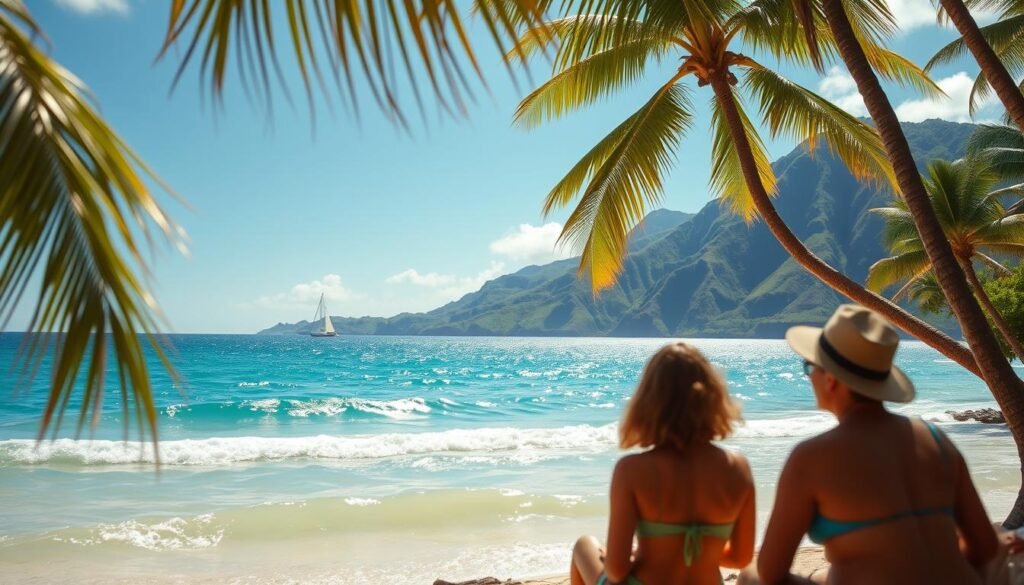
My process sorts choices by predictable patterns so I can match activities with likely conditions.
Climate: seasons, swells, storms, and day-to-day conditions
I watch two main seasons: a drier stretch from May through October and a wetter run from November through April. I tune daily plans around quick-moving showers and the rainbow windows they leave behind.things-to-do-in-duluth
I track swells carefully. North shores fire in winter; summer typically brings gentler water for snorkeling. I also monitor June–November hurricane season and book flexible options during the higher-risk months.
Crowds: peak vs off-season patterns and holiday spikes
I avoid peak weeks: summer holidays, late December, and spring break. The quietest stretches are January–February and September–October. If I want solitude, I pick less-busy islands or quieter sides of an island.
Costs: flights, hotels, vacation rentals, and car rentals by season
- Hotels & cars: lowest in September–October.
- Vacation rentals: dip in early November and shoulder months.
- Airfare: I scan late-winter and shoulder-month deals and favor refundable rates when storms loom.
| Category | High season | Low season | What I do |
|---|---|---|---|
| Climate | Nov–Apr (wetter) | May–Oct (drier) | Match coast to conditions |
| Crowds | Jun–Aug, Dec holidays | Jan–Feb, Sep–Oct | Book popular hikes early |
| Costs | Summer, holidays | Sep–Oct, early Nov | Lock refundable deals |
Hawaii’s seasons at a glance: summer vs winter on the Hawaiian Islands
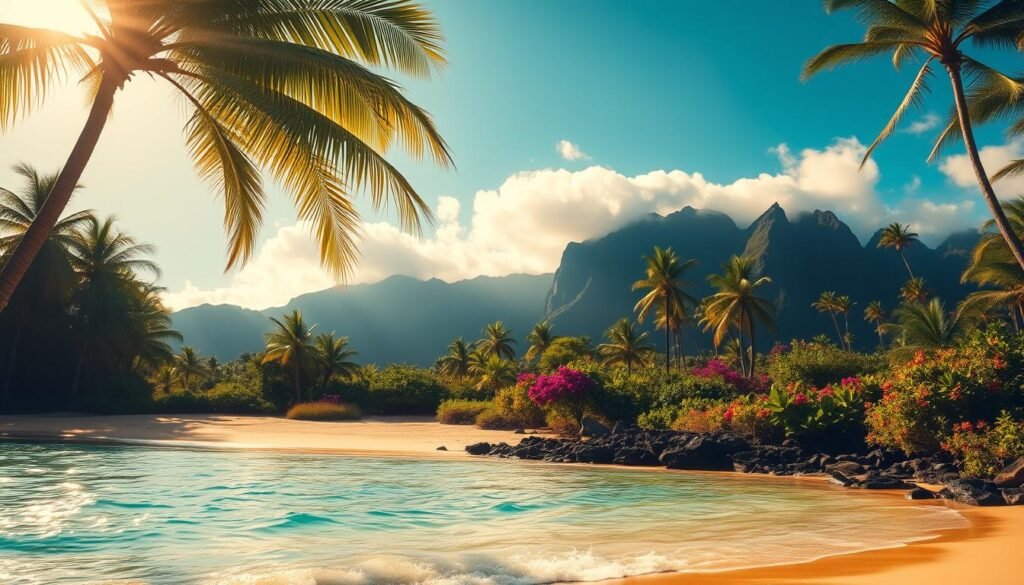
I map seasonal shifts into simple choices so you know when to chase calm seas, catch mango markets, or plan whale watching.
Summer (May–October): dry days, calmer seas, mango season
Summer brings drier weather across the hawaiian islands and warmer ocean temps—roughly the low 80s—so swimming stays easy all day.
Summer months mean calmer water on many shores, perfect for snorkeling, paddling, and long beach afternoons.
Mango season runs May through October, and festivals pop up across the islands with lively nights and family-friendly events.things-to-do-in-kyoto-japan
Winter (November–April): rainier patches, big surf, whale season
Winter is rainier; showers can be brief and the rest of your day often clears up quickly.
North shores load with big waves that draw surfers and crowds, so I plan swimming on leeward or south/west shores instead.
Whale season hits December through March with peak activity mid-January to March—Maui often shows outstanding surface action on calm mornings.
- Ocean temps range from low 70s in winter to around 80°F in summer.
- I watch seasonal shifts so one rainy spell never ruins things—there’s usually a sunny window later that day.
Month-by-month: the best times to visit Hawaii for weather, events, and activities

I break the calendar into clear windows so you can plan hiking, snorkeling, or whale watching with confidence.
January–March
Days average near 78°F with nights around 65°F. I build itineraries around whale shows and the Maui Whale Festival in January.
Expect mild hiking weather, passing rain, and rougher seas at times. I keep boat plans flexible.
April–May
These shoulder months feel like spring: ~80–82°F and clearer skies. I love quieter beaches, snorkeling, and stargazing nights.
June–August
Mid-80s and humid, with festivals and bigger crowds. Trade winds help; I book early and aim for morning ocean activities.
September–October
Near 80°F, lighter crowds, and solid deals on stays and cars. October hosts the Food & Wine and Honolulu Festival—great cultural picks.
November–December
November can yield savings but brings more rain. December cools to ~75°F and fills with holiday energy and events like Honolulu City Lights.
- Plan by conditions: pair Napali boat tours with calmer summer seas and whale trips with winter months.
- Always check wind and swell forecasts and keep a land backup like museums or a food tour.
For more seasonal detail, see this seasonal guide.
“I match activities to months so you get the most from every island visit.”
Best time to visit each island: Oahu, Maui, Kauai, and the Big Island
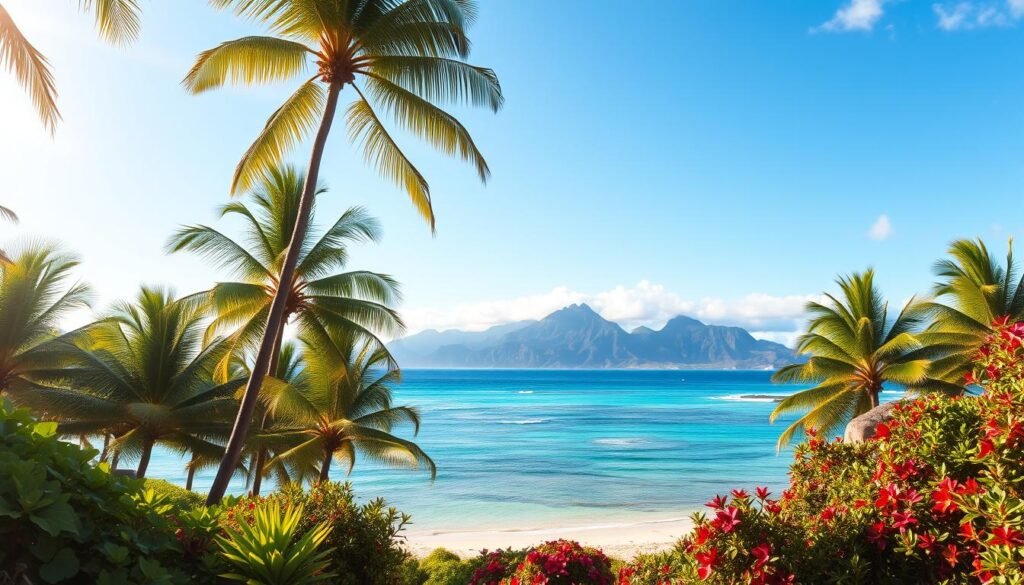
I sort islands by likely sea and weather conditions before I lock any hotel or rental car. That helps me match beaches, boat trips, and surf watching with calmer or rougher coastal stretches.
Oahu
I suggest Waikiki or Ko Olina for more sunny days and drier stays on leeward sides. If you want to swim the North Shore, skip the powerful winter swells—those months are for big-wave comps and spectators, not casual beach days.things-to-do-in-kona
Maui
I target mid-January through March for peak whale action and plan shoulder months when prices ease and reservations are simpler. Summer can be hot on leeward resort stretches and the Road to Hana can get busy, so I book earlier if I travel then.
Kauai
The Garden Isle is lush and rainier; I schedule Napali coast boat tours in calmer summer windows. I always pack a rain-ready backup so a brief shower won’t derail a day of cliffs and waterfalls.
Big Island
I favor shoulder months for calmer Kohala Coast beaches and easier entry points for snorkeling. Manta ray night swims run year-round, though winter seas sometimes force cancellations—so I keep plans flexible.
My rule: match each island’s coastline to likely conditions so snorkelers find gentle coves, families get safer beaches, and surfers chase seasonal swells from the right vantage points.
When the weather is “best” (and what “best” means for me)
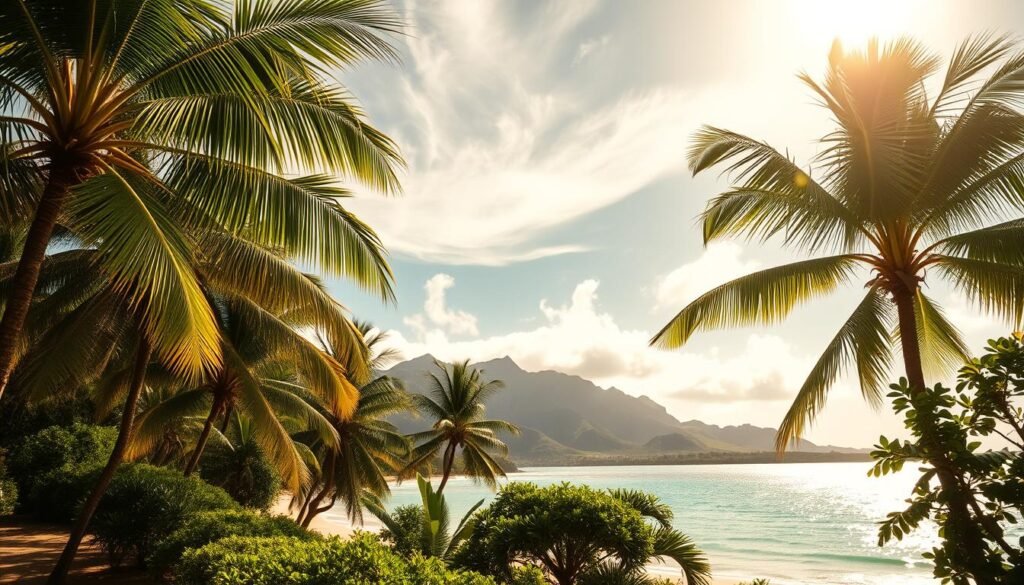
I look for windows when skies clear, winds calm, and humidity drops—those days make island outings smooth and fun. For me, the best time means steady sunshine, low to moderate humidity, and manageable trade winds so outdoor plans run on schedule.
April, May, and October: my sweet spot
April, May, and October usually deliver the combo I want: clear mornings, mild afternoons, and fewer crowds. These months keep humidity down and showers light. Nights still feel warm with lows in the high 60s to low 70s, so dinners outdoors stay pleasant.
Leeward vs windward: aiming for drier resort areas
I favor leeward resort bases—Waikiki, Ko Olina, Kaanapali, Wailea, Poipu, and the Kohala Coast—because they get less rain and more sunny pool days. Even in wetter spells, I schedule windward hikes or waterfalls for mornings when forecasts look best.
I always check wind, swell, and rain chances 24–48 hours ahead so I can reorder activities and keep the trip smooth.
The cheapest time to travel: when I find deals on hotels, rentals, and cars
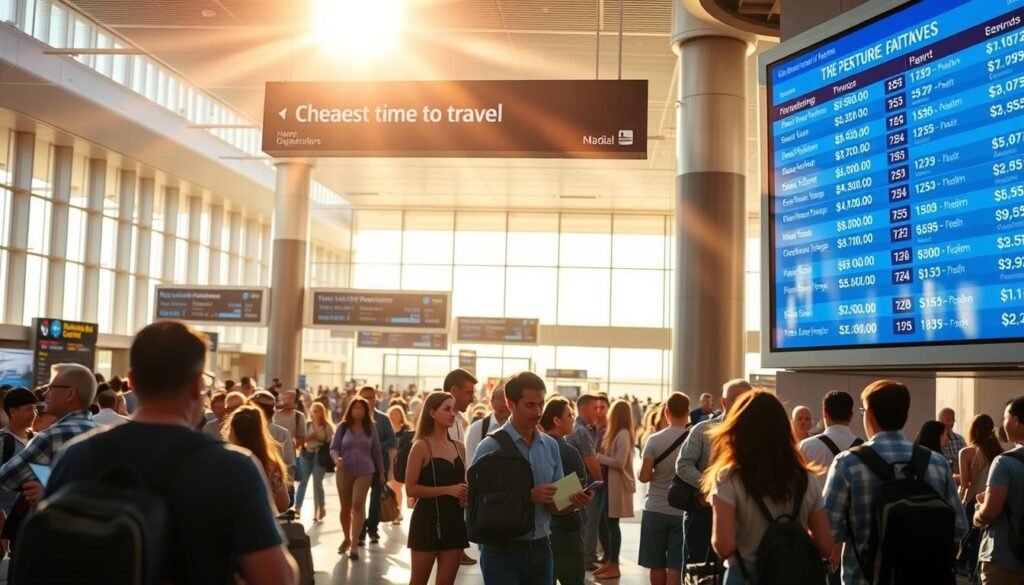
I zero in on predictable off-peak pockets so travel costs fall and visitors thin out.
In my experience, two windows lead the savings: February–March and early fall—especially September–October. I watch those months for lower hotel and car rates, and for vacation rentals that dip into early November.
When I book and why it works
I avoid school breaks and holiday spikes. Summer, Thanksgiving week, and the late-December holidays push visitors and rates up fast.things-to-do-in-kona-hawaii
- I scan fares year-round and grab airfare sales with alerts.
- I reserve cancellable stays in shoulder months and recheck prices before final payment.
- I book cars early for peak weeks, then reprice in Sept–Oct when rates often fall.
| Category | Cheapest months | Notes |
|---|---|---|
| Hotels | Sept (overall) | Oahu usually cheapest on average |
| Vacation rentals | Sept–Oct, early Nov | 2019–2023 showed Oct lows; 2024 nudged Sept lower |
| Car rentals | Sept–Oct | Rates track lodging demand |
| Airfare | Year-round deals | Use alerts; don’t wait for a single month |
My tip: plan midweek travel in shoulder months and you’ll often unlock the best savings and thinner crowds for your island plans.
Hawaii in whale season: the best times and places to see humpback whales
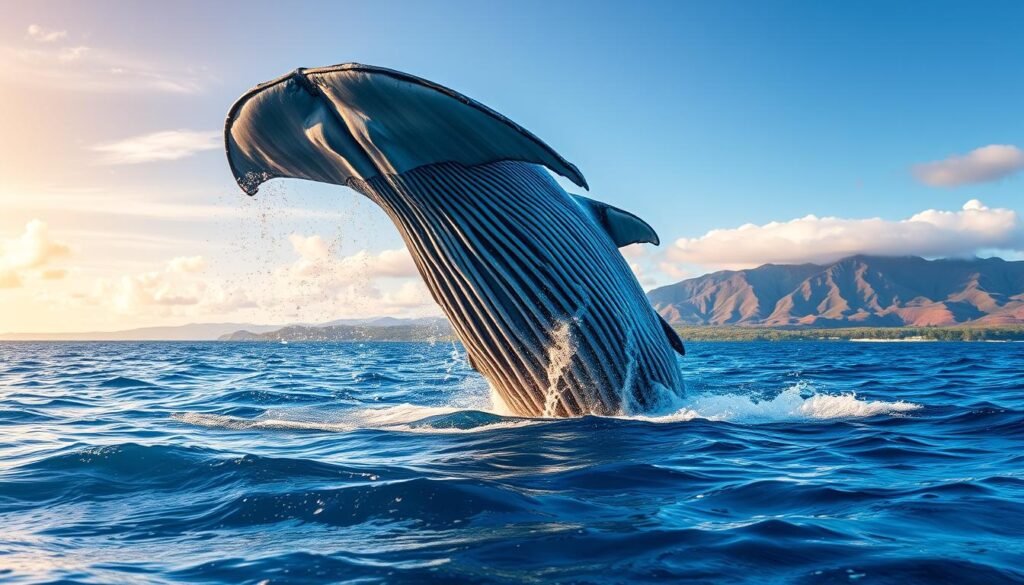
Each winter I watch the horizon closely—whales often transform calm mornings into a wildlife show. The season runs December through March, with peak activity mid-January through March. Official counts during peak months underline Maui’s lead: on 2/24/2024 counts showed Maui 948, Oahu 363, Kauai 239, and Big Island 466.
When I plan excursions, I favor morning outings. Wind and swell rise in the afternoon, so mornings mean gentler seas and clearer sightings.
Peak watching and top island spots
I time peak whale watching for mid-January through March. From Lahaina and Maalaea on Maui I’ve seen big breaches and tail slaps. On Oahu I scout Makapu‘u and east lookouts. On Kauai I watch south shore bluffs like Poipu, and on the Big Island I scan the Kohala Coast.
Boat tours, shore scans, and respect for wildlife
- I pair a shore-based scan with a short boat trip for the best chances in one day.
- I choose licensed operators and morning departures for calmer rides.
- I keep distance, never chase animals, and follow local guidelines to protect breeding grounds and the ʻāina.
Surf, snorkeling, and beach conditions: timing ocean activities by month
Ocean conditions shift by month, so I match each day’s plan to the likely swell and wind. That helps me pick the right shore for snorkeling, surfing, or a family beach day.
Summer swells vs winter waves: choosing the right shores for your skill level
In summer I find calmer seas on many north and south shores and water near ~80°F. Those lower waves and lighter swells improve visibility and make sheltered coves ideal for beginners and casual snorkelers.
Winter brings big waves driven by storms off Alaska. Currents get stronger, so I steer surfers toward protected, lifeguard-monitored breaks or advanced spots with local guidance. For big-wave spectating, I watch from safe lookouts on the north shores.best-places-to-visit-in-october
Safest times for swimmers and families seeking calm beaches
I aim for morning departures because wind and chop often build later in the day. I check lifeguard flags and Hawaii Beach Safety each morning, and I keep boat trips flexible when advisories appear.
- Summer: gentle conditions for beginner snorkeling and calm beaches.
- Winter: move swimming to leeward or south/west beaches; enjoy north-shore shows from shore.
- I balance thrill and safety—if surf or swells spike, I swap to hikes, markets, or cultural activities until seas calm.
Hurricane season and rainy season: what I actually do when storms threaten
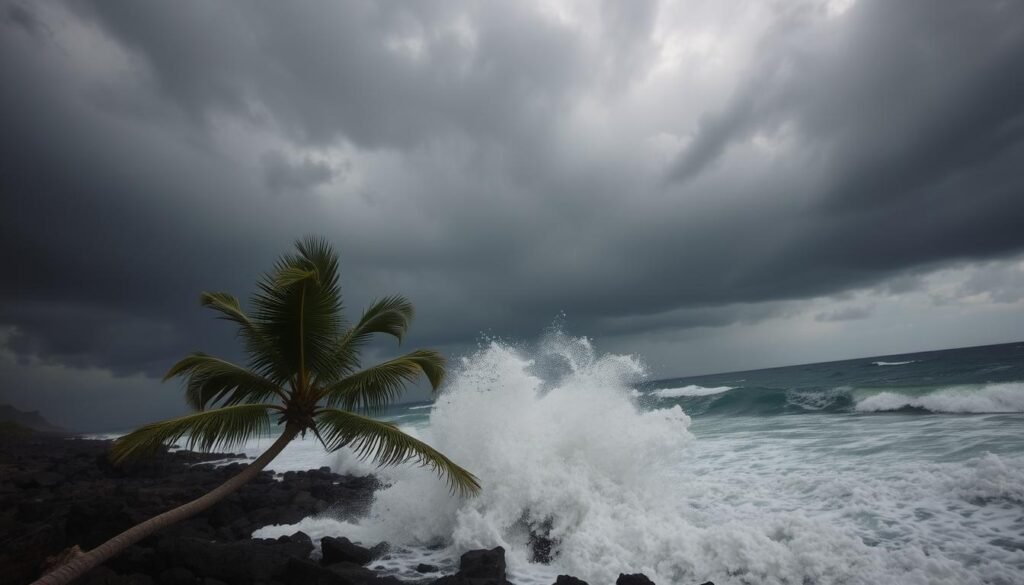
Storm watches change my daily plans: I move boats, lock in covered activities, and stay flexible so bad weather doesn’t spoil the trip.
I track hurricane season closely—June through November—with the highest odds in July–September. Direct hits are rare, but systems can disrupt boats and ferries, so I reshuffle ocean plans first.
Rainy season runs November–March and still gives many sunny breaks. I book a leeward base on the island and schedule windward day trips for the driest hours.
On short notice I: carry a light rain jacket, pick museums and food halls as backups, and move boat tours earlier or later in the week when advisories pop up.
“I bookmark local radar and respect closure notices—safety comes first on trails, roads, and beaches.”
- I watch forecasts in June–Nov and reroute ocean days if a system forms.
- I keep land plans flexible and swap in island drives, coffee farms, or scenic lookouts when storms cancel boats.
- Even during watches I hunt for sunny pockets on other coasts—renting a car keeps that option open.
| Risk | Typical months | My approach |
|---|---|---|
| Hurricane | Jun–Nov (peak Jul–Sep) | Move boat trips, monitor advisories, choose refundable bookings |
| Rainy season | Nov–Mar | Base leeward, plan windward mornings, carry rain gear |
| Short storms | Year-round | Swap to covered activities and check radar each day |
How crowds ebb and flow: the quietest times and the busiest weeks
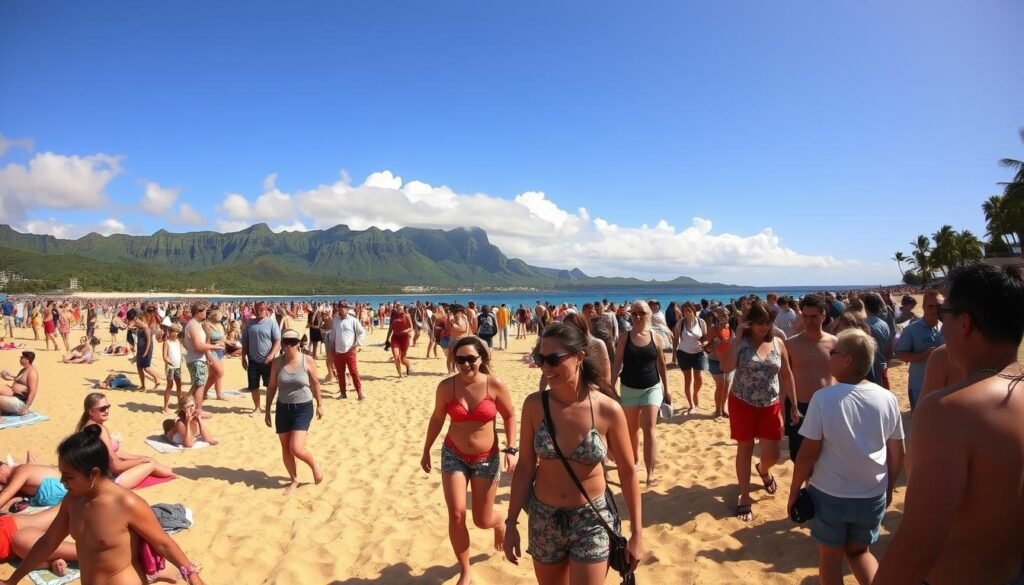
Visitor counts rise and fall in clear waves, and I ride the quieter ones for calmer trips.
I watch patterns so I can avoid long lines and noisy beaches. Two low-census stretches stand out: January–February and September–October. After Labor Day, September and October usually show the lowest number of visitors across islands.best-places-to-visit-in-florida
Least crowded
January–February and September–October deliver the lightest crowds. Reservations are easier and popular spots feel peaceful.
Most crowded
Expect heavy crowds during summer vacation, late December holidays, and spring break. Oahu draws the largest number of people; Kauai and the Big Island often feel quieter in comparison.
“If you want calm beaches and shorter lines, aim for shoulder months and midweek plans.”
- I point crowd-averse travelers toward Jan–Feb and Sep–Oct when visitor numbers dip.
- In peak summer, start at sunrise, pick weekdays, and head to lesser-known beaches.
- Book restaurants and tours early in busy months and keep at least one backup plan.
| Period | Typical crowd level | My tip |
|---|---|---|
| Jan–Feb | Low | Best for quieter beaches and easier reservations |
| Sep–Oct | Low | Great savings on hotels and cars after Labor Day |
| Summer & Spring Break | High | Use early starts and weekday plans to avoid lines |
| Late Dec holidays | Very High | Avoid if you want peace; book far ahead if traveling |
Events and festivals I love: timing a trip around culture and food
I weave local festivals into my plans so a single evening can become a memorable highlight.
I time trips around the fall Food & Wine events because the Hawaii Food & Wine Festival brings star chefs and world-class tastings across several islands. That festival is a great place to sample regional flavors and meet visiting chefs from around the world.
Summer festivals, Food & Wine, Kona Coffee Cultural Festival
Maui Film Festival often fills summer months with outdoor screenings. The Kona Coffee Cultural Festival lands in November on the Big Island and mixes farm tours with music and deep coffee heritage.
Holiday lights in Honolulu and film festivals under the stars
December’s Honolulu City Lights makes downtown a festive place for a slow evening stroll. I also slot in Hawaii International Film Festival dates when they match my travel, since HIFF appears in fall and sometimes spring.
- I love planning around festivals: Food & Wine brings star chefs and global tastings.
- I add craft fairs, slack key performances, and neighborhood night markets for culture-forward things.
- I always pad an extra day for pop-up happenings—live hula, ukulele jams, and food truck rallies pop up often.
“Plan an after-beach evening for a film under the stars—it’s one of my favorite island rituals.”
Planning your trip: aligning your activities with the right month
I map activities onto months so your plan matches real island conditions and skips false starts. That approach keeps the itinerary flexible and focused on what you most want to do.
Whales, hiking, and waterfalls vs. snorkeling, boating, and beach days
Whale watching peaks mid-January through March, so I lock morning boat or shore scans then. For waterfalls, I lean into the rainy season when falls run fuller and photos pop.
Snorkeling and calm boating are usually stronger in summer and early fall. On the Big Island, manta night swims run year-round; I book early and allow reschedules if seas get rough.
Sample seasonal pairings: what I’d plan in spring, summer, fall, winter
- Winter: plan whales, ridge hikes, and watch big-wave lookouts; move swims to leeward or south beaches.
- Spring: aim for clear mornings, coastal walks, lower-wind snorkels, and waterfalls after rain.
- Summer: book calm-cove snorkeling, catamaran cruises, and long beach days with early starts.
- Fall: mix boat days, food festivals, easy hikes, and shoulder-month savings.
I always build buffer days around high-priority activities so weather or swell won’t derail your main trip goals. Pick coasts based on conditions: leeward for sun and windward for lush hikes between showers.
Best time of year to visit Hawaii for different travel goals
I pick months that match your priorities—saving money, family ease, or ocean thrills—so your plan fits real island life.best-places-to-visit-in-the-us
Budget-focused travelers
Where I save: I steer budget seekers toward September–October with early November as a backup for lower lodging and car rates.
Late winter, especially February–March, can reward you with airfare deals. I watch fares and lock refundable stays when prices dip.
Families with school schedules
If summer is fixed, choose leeward resort bases for sunnier days and calmer beaches.
Start activities early, book key tours well ahead, and build in rest days so kids beat crowds and heat.
Surfers, snorkelers, and wildlife lovers
Surfers: winter mean big north-shore swells—pick lifeguarded breaks and local lessons for safety.
Snorkelers: summer into early fall gives calmer coves and clearer visibility; I book boats with flexible cancellation policies.
Wildlife lovers: I plan humpback cruises mid-January through March and book manta night swims on the big island any month you travel.
- I match island choice to goals: Oahu for variety and pricing, Maui for whale action, Kauai for scenery, and Big Island for space, volcanoes, and mantas.
- I beat crowds with midweek arrivals, sunrise starts, and off-peak dining.
“Pick the goal first, then pick the island and months that give you the highest chance of success.”
Conclusion
Conclusion
When I sum up the seasons, four windows stand out as the easiest balance of weather, crowds, and cost: April, May, September, and October (with early November as a close runner‑up). If my calendar is open, I usually pick September for calm water, lower rates, and fewer people.
Whale watchers should aim mid‑January through March for peak action, and everyone should remember hurricane season runs June–November while rainy months peak November–March. If you need shoulder advice, see this guide on shoulder months.
Across the Hawaiian Islands, I match goals—budget, family beaches, surf, or wildlife—to the month that fits. With a flexible plan, any day on these islands can become your favorite place in the world.


